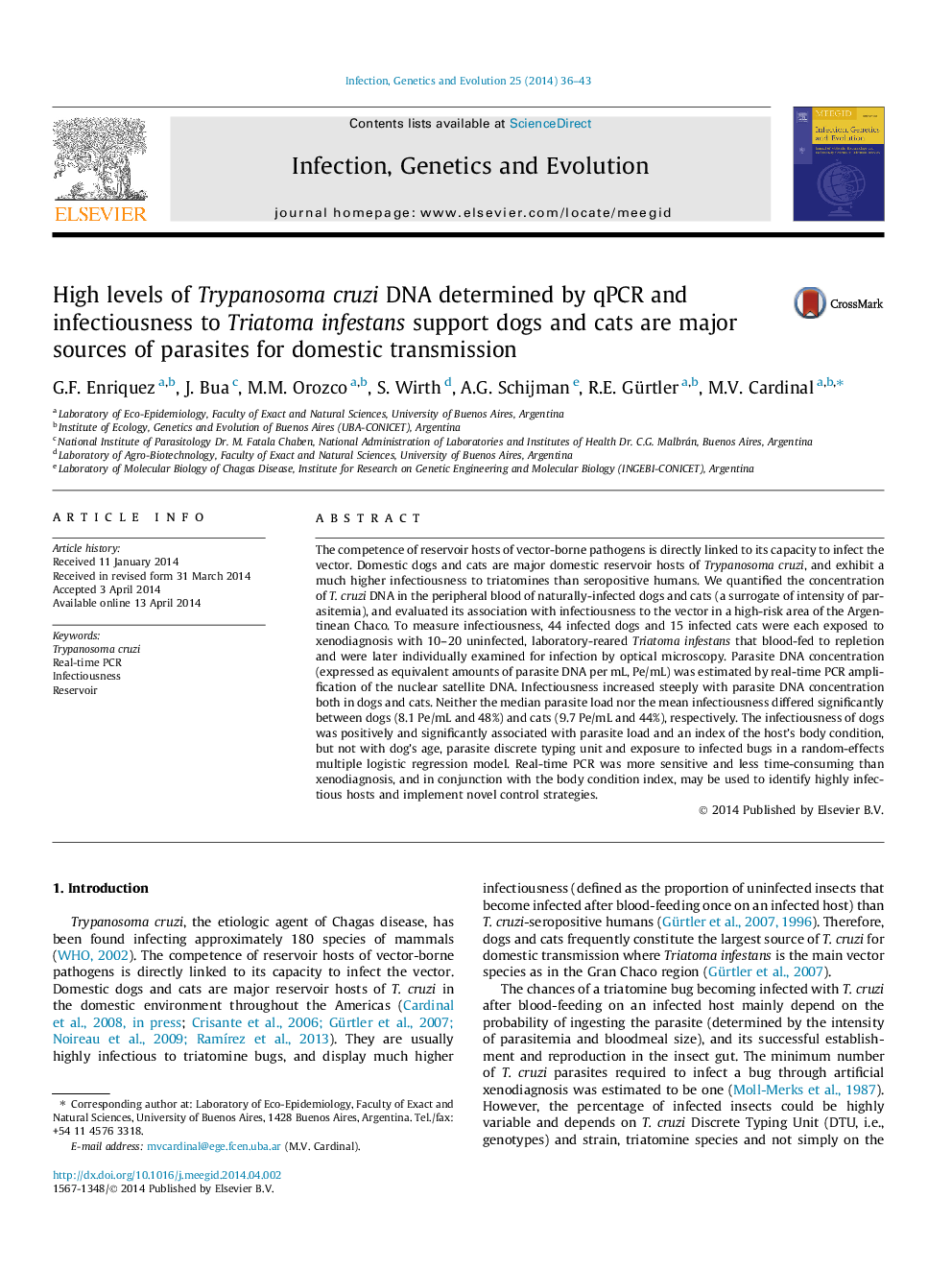| Article ID | Journal | Published Year | Pages | File Type |
|---|---|---|---|---|
| 5909273 | Infection, Genetics and Evolution | 2014 | 8 Pages |
â¢We measured the parasite load of dogs and cats infected with T. cruzi by qPCR.â¢The parasite load of dogs and cats was higher than in chronic human patients.â¢Infectiousness to the vector was associated with parasite load in both hosts.â¢qPCR may be used to identify highly infectious hosts and to assess treatment efficacy or infection status.
The competence of reservoir hosts of vector-borne pathogens is directly linked to its capacity to infect the vector. Domestic dogs and cats are major domestic reservoir hosts of Trypanosoma cruzi, and exhibit a much higher infectiousness to triatomines than seropositive humans. We quantified the concentration of T. cruzi DNA in the peripheral blood of naturally-infected dogs and cats (a surrogate of intensity of parasitemia), and evaluated its association with infectiousness to the vector in a high-risk area of the Argentinean Chaco. To measure infectiousness, 44 infected dogs and 15 infected cats were each exposed to xenodiagnosis with 10-20 uninfected, laboratory-reared Triatoma infestans that blood-fed to repletion and were later individually examined for infection by optical microscopy. Parasite DNA concentration (expressed as equivalent amounts of parasite DNA per mL, Pe/mL) was estimated by real-time PCR amplification of the nuclear satellite DNA. Infectiousness increased steeply with parasite DNA concentration both in dogs and cats. Neither the median parasite load nor the mean infectiousness differed significantly between dogs (8.1Â Pe/mL and 48%) and cats (9.7Â Pe/mL and 44%), respectively. The infectiousness of dogs was positively and significantly associated with parasite load and an index of the host's body condition, but not with dog's age, parasite discrete typing unit and exposure to infected bugs in a random-effects multiple logistic regression model. Real-time PCR was more sensitive and less time-consuming than xenodiagnosis, and in conjunction with the body condition index, may be used to identify highly infectious hosts and implement novel control strategies.
